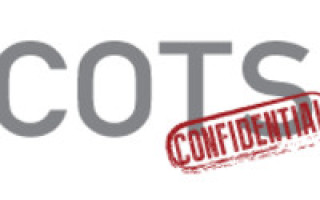Border security, COTS tech, VPX systems, threat detection trending in European defense market and DSEI show
StorySeptember 29, 2015

Every month the McHale Report will host an online roundtable with experts from the defense electronics industry ? from major prime contractors to defense component suppliers. Each roundtable will explore topics important to the military embedded electronics market. This month we discuss the Defense and Security Equipment International (DSEI) held this month in London and the European defense electronics market with exhibitors from the show.
This month’s panelists are: Joe Held, Director of International Sales, Omnetics Corp.; Nigel Norman, CEO, Sarsen Technology, Ltd.; and Nigel Forrester, Technical Marketing Manager, Concurrent Technologies.
MCHALE REPORT: The Defense and Security Equipment International (DSEI) show was held this month in London. What trends regarding military designs and applications did you see emerging at the event?
HELD: We saw a continued movement towards threat detection (i.e. – advanced radar) and soldier worn electronics (communication, vision systems).
NORMAN: The biggest trend we are seeing this quarter is engineers at leading military and aerospace OEMs looking to make use of large FPGA devices in their new designs. The downside is that there is a shortage of competent VHDL & Verilog designers at many of these OEMs. This is an opportunity for specialist FPGA consulting design houses and for the implementation of initiatives such as OpenCL development for FPGA. The other continuing trend is the re-engineering of legacy CompactPC and VME systems to VPX and custom COM Express-based designs.
FORRESTER: DSEI is a wide-ranging show with military products from thermal underwear to complete battleships, but we didn’t pick up on a specific trend this time. There did appear to be more unmanned devices on display confirming a continued focus in this area. As an exhibitor we perhaps saw what we were looking for, the improved acceptance of COTS-based electronics products many of which used Intel processor technology.
MCHALE REPORT: What are the hot application areas in the European military market such as unmanned systems, radar, avionics, etc.?
HELD: We are seeing a lot of advancement in radar systems – airborne, shipboard, and satellite. To expand slightly on this, we see several large satellite projects currently underway in Europe specifically regarding satellite radar systems.
NORMAN: One of the hot application areas we are seeing is for deployable military grade network security applications. The networks can take many forms and the solutions are obviously based on the physical environment for each project. In recent weeks we have seen new project activity on secure Wi-Fi applications on rugged land vehicles, multi-mode secure airborne SATCOM modems, and secure data and information exchange systems in office environments.
FORRESTER: The hot topic in Europe at the moment concerns border security. In 2015 there has been a dramatic increase in the number of migrants and refugees arriving in Europe – 500,000 in the first eight months of the year alone. This is driving a need for newer/better/improved devices for tracking ships in the Mediterranean and individuals crossing the numerous borders. There is increased interest in devices like portable RADAR systems alongside a trend for continued cost reduction.
MCHALE REPORT: How would you describe the defense electronics market in Europe -- growing, declining, or just flat? Why?
HELD: Overall it may be flat, but we see strong growth in the demand for unmanned aerial vehicle [UAV], satellite, and soldier-worn electronics.
NORMAN: Sarsen Technology is seeing a strong growth in the European defense markets. In addition to new budgets for network security projects we are seeing a number of long-term land vehicle and airborne laser defense projects finally moving to production.
FORRESTER: Whilst we don’t disclose the geographical split, we see growth globally in the military market as our defense related revenues for the first half of 2015 showed a 50 percent increase.
MCHALE REPORT: How would you describe the demand for commercial-off-the-shelf (COTS) products in Europe? What standards or products are hot?
HELD: Requirements for reduced size, weight, and power (SWaP) in military systems worldwide has resulted in more demand smaller, rugged connectors as well.
NORMAN: The 3U and 6U VPX formats are increasingly recognized as the safe board and system format for adopting new designs. SWaP has become a cliché and you can’t read a marketing bulletin without reading this term. However, there is a pressure on designers to specify small, lightweight systems and these are often based on COM Express building blocks. In the FPGA arena there is strong demand for Xilinx Zynq and Virtex 7 FPGA as well as Altera Arria 10 and Stratix V FPGA solutions. There is still a place for PowerPC architecture solutions such as the multi-core T4240, but many designs are based on Intel i7 and the Xeon D CPU.
FORRESTER: VPX designs continue to gain in popularity. Europe still lags the USA in VPX adoption rates but we are starting to see more momentum building, particularly for the 3U format as it’s powerful enough for many systems and has good SWaP metrics. There has also been demand for updated VME boards for long-life applications overcoming a bridge component end-of-life issue.





